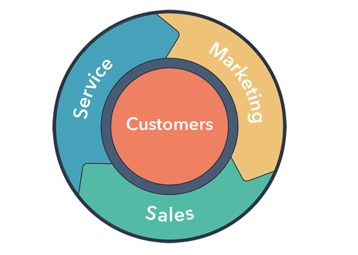It doesn’t matter how expertly-written your latest blog is, how many ‘likes’ your latest video gets, or how much effort you put into refining and re-refining your marketing strategy; what your customers think about your business will always outweigh what you tell everyone.
Consumers are bombarded by endless content about anything they could think of (plus a lot of stuff they’d never even think of thinking of). The number of purchasing options they have at their fingertips is limitless, particularly with the rise of mobile as the dominant way users consume this information. 2018 customers have a much higher expectation of service than their forebears did even just 10 years ago. They’ve become less trusting and less patient, because they know that if you don’t tick their boxes, they’ll just find someone else who will. As a result, the balance of power has switched from businesses to customers.
It doesn’t matter if your business model is faultless, your product or service is incomparable or your marketing strategy is genius; if your customer service lets you down, you’ve lost a potential customer. It’s as simple as that. Fortunately, improving your ‘customer capital ratio’ isn’t too far out of reach.
Increasing Customer Acquisition Cost
Marketing strategies have significantly evolved over the last 10 years - even the last five. Email used to be the main form of communication and conversion, especially for e-commerce companies. Regular blogging used to keep your website at the top of every search engine result, and social media successfully connected your business with your ideal target audience.
But then email stopped working. The more you sent, the less your customers cared. Their inboxes were jammed with emails from every other business they’d subscribed to and yours just added to the noise. Blogging still worked, but everyone else started doing it too so there was much more competition for eyes. Social media algorithms changed (and continue to change) so instead of businesses enjoying organic traction, they had to start paying to display their posts in front of their own customers’ eyes.
As marketing has evolved, so too has Customer Acquisition Cost (CAC). Put simply, it’s becoming increasingly expensive to attract and retain a customer. Content remains an important marketing tool, but now quality outweighs volume so investment is required. Social media advertising expenditure is always on the up and up too.
Happy Customers Are a Marketer’s Best Friend
A sure-fire way of saving on CAC is to ensure your current customers are happy - and tell everyone about it. Happy customers are better-engaged, spend more and will recommend you to their friends (the opposite is true too). The happier they are during the selling process, the more likely they’ll respond positively to up-selling or cross-selling. And if they enjoy the process the first time, they’ll keep coming back for more.
Sure, changes to search, social and other channels make it harder for marketers to grab the attention of their target audiences. But ever-evolving customer behaviour also contributes. People are less patient with service expectations and more skeptical about what they read online. They see awesome service from one company then expect the same from everyone else they deal with.
Where inbound might have been your most successful marketing strategy in the past, today customer reviews are increasingly influential. Businesses small and large say that word-of-mouth is their best source of referrals. It makes sense, then, that your customers’ opinions should form a major part of your marketing strategy.
Get to Know Your Customers - Stat
If there’s only one thing you get out of this article, it’s this: if you don’t understand what your customers like about your business - and perhaps more importantly, what they don’t like - brace yourself for failure.
You might think you know your business, but the only person who really knows how you’re performing is the person you’re trying to sell to. Allocate significant time to talk to your customers. Find out what they think you do well at, and what you need to work on
From there, create case studies, testimonials and video interviews that highlight all your best bits as told from an objective customer’s point of view, not from your business’ subjective perspective. Understanding that consumers are more likely to become customers because of what other people say about you is an important first step to take.
From a Marketing Funnel to a Customer Flywheel

Every marketing expert was brought up on the funnel methodology, where marketing generates leads and passes them down the funnel to Sales who converts them into customers. HubSpot recently theorised that the funnel is out and the flywheel is in because, “Your job isn’t to close deals, it’s to open relationships. And those customer relationships are ultimately what power your business.”
HubSpot’s flywheel theory doesn’t end a customer journey after their first purchase like a funnel does; it encourages an ongoing and reciprocal relationship between Marketing, Sales and Service. Every part of the process is essential to keep customers happy and onside with your business, because if they’re not happy they’ll not only move onto someone else, they’ll also tell everyone they know about your poor service.
The Importance of Customer Capital
The majority of companies don’t know who their unhappy customers are because unhappy customers don’t tell you - they just leave. Most companies also don’t have the tools they need to understand who has left or why, which makes for a lot of questions about performance.
Find out where your customer capital is sitting by creating a balance sheet of sorts (think assets versus liabilities, except in this case it’s happy versus unhappy clients). Understanding how happy or not your customers are is an excellent opportunity to get a good handle on how your customer capital is looking. If it’s not looking great, ask your customers how you can improve - and most importantly, take their advice.
Still doing marketing the old way? Need a hand improving your own customer capital and user experience? Book a free meeting with Ryan Watkins from Hype & Dexter to find out what you need to do to get your customer capital back on track.
What tools do you use to monitor how happy/unhappy your customers are? Let us know in the comments below.




.jpg)
Comments